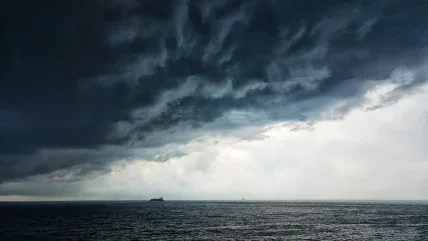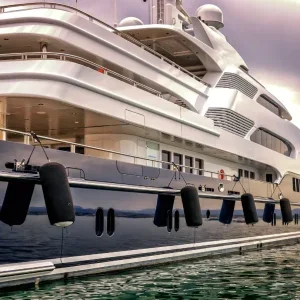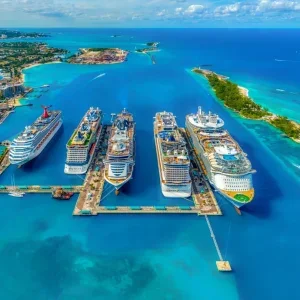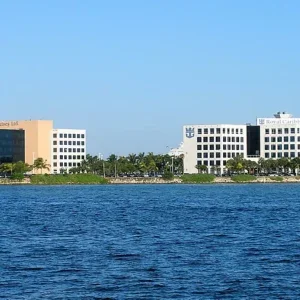
The allure of cruising lies in its promise of leisurely voyages across azure waters, offering passengers a chance to explore exotic destinations while indulging in luxury aboard floating resorts. However, beneath this facade of tranquillity lies a reality shaped by the unpredictable forces of nature. Extreme weather events, ranging from fierce hurricanes to tempestuous storms, pose formidable challenges to the cruise industry, disrupting operations, jeopardising safety, and impacting financial performance. In this comprehensive analysis, we delve deep into the intricate relationship between extreme weather and the cruise sector, examining the strategies employed by industry stakeholders to navigate these turbulent waters and ensure a smooth sailing experience for passengers.
Understanding the Impact of Extreme Weather
Weathering the Storm: How Extreme Events Affect Cruise Operations
Extreme weather events, characterised by their intensity and unpredictability, exert a profound influence on cruise operations worldwide. Hurricanes, cyclones, and severe storms can wreak havoc on carefully planned itineraries, compelling cruise lines to alter routes, cancel sailings, or delay departures to safeguard the well-being of passengers and crew. These disruptions not only disrupt travel plans but also incur significant financial costs, as cruise operators grapple with expenses related to fuel consumption, port fees, and compensation for affected passengers.
Charting the Course: The Financial Implications of Weather Disruptions
The financial ramifications of extreme weather disruptions extend beyond immediate operational costs, impacting revenue streams and market perceptions. Cruise lines often face the daunting task of balancing passenger safety with financial considerations, as itinerary changes and cancellations can lead to revenue losses and damage to brand reputation. Moreover, insurance premiums may rise in the wake of severe weather events, adding to the financial strain on cruise operators. Despite these challenges, prudent risk management practices and investments in weather forecasting technologies enable cruise lines to mitigate the impact of weather-related disruptions and maintain financial resilience in an increasingly volatile operating environment.
Navigating the Challenges
Smooth Sailing: Strategies for Weather Resilience
In response to the challenges posed by extreme weather events, cruise lines have adopted a range of proactive measures to enhance weather resilience and ensure the safety and satisfaction of passengers. Key strategies include:
- Advanced Weather Monitoring: Leveraging sophisticated meteorological technologies, including satellite imagery, radar systems, and predictive modelling, to monitor and forecast weather patterns with precision. Real-time data analysis enables cruise operators to make informed decisions regarding itinerary adjustments and route diversions, minimising the risk of adverse weather encounters.
- Flexible Itinerary Planning: Embracing a flexible approach to itinerary design and scheduling, allowing for rapid adaptation to changing weather conditions and unforeseen circumstances. By maintaining alternative port options and contingency plans, cruise lines can mitigate the impact of weather-related disruptions on passenger experiences and operational efficiency.
- Emergency Preparedness: Investing in comprehensive emergency preparedness protocols and crew training programs to ensure swift and effective response to weather-related emergencies. Regular drills and simulations enable crew members to familiarise themselves with emergency procedures, including evacuation protocols and communication protocols, enhancing onboard safety and crisis management capabilities.
- Communication and Transparency: Prioritising clear and timely communication with passengers regarding weather-related updates, itinerary changes, and safety protocols. Proactive engagement with passengers through multiple channels, including onboard announcements, digital platforms, and customer service channels, fosters trust and confidence, mitigating potential concerns and enhancing the overall guest experience.
The Future of Weather Resilience in the Cruise Industry
Charting a Course for Resilience: Trends and Innovations
As climate change continues to alter global weather patterns, the cruise industry faces an evolving landscape of weather-related risks and opportunities. Cruise lines are increasingly embracing sustainable practices and eco-friendly technologies to mitigate their environmental impact and adapt to changing weather conditions. From the adoption of alternative fuels and energy-efficient propulsion systems to the integration of weather-resistant design features and resilient infrastructure, cruise operators are pioneering innovative solutions to enhance weather resilience and sustainability across their fleets.
Furthermore, collaboration with meteorological agencies, research institutions, and industry partners enables cruise lines to leverage cutting-edge forecasting models, data analytics, and risk assessment tools to improve weather forecasting accuracy and enhance operational preparedness. By harnessing the power of technology and collaboration, the cruise industry is poised to navigate the complexities of extreme weather with greater agility and confidence, ensuring the continued safety and satisfaction of passengers in an ever-changing environment.
Conclusion
In conclusion, extreme weather events represent a significant challenge for the cruise industry, impacting operations, finances, and passenger experiences alike. However, through proactive risk management, investment in advanced technologies, and a commitment to safety and sustainability, cruise lines can mitigate the impact of weather-related disruptions and ensure a smooth sailing experience for passengers. As the industry continues to evolve, weather resilience remains a critical priority, driving innovation, collaboration, and adaptation to confront the uncertainties of the future. By embracing resilience as a guiding principle, the cruise industry can navigate the choppy waters of extreme weather with confidence, charting a course towards a safer, more sustainable future for all stakeholders involved.






